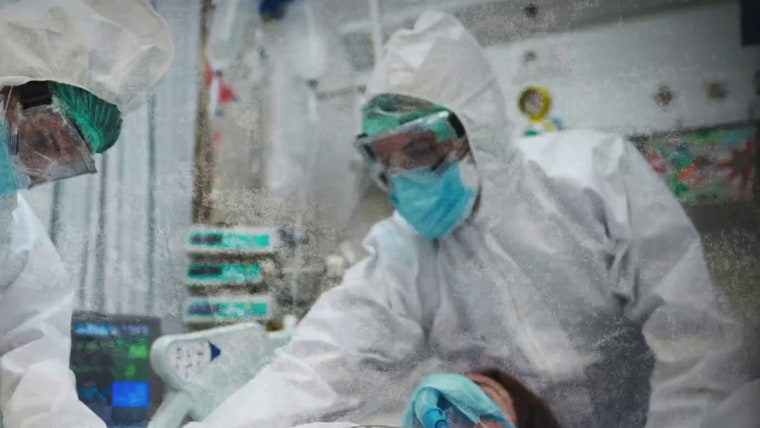Covid is rampant among deer, research shows
Humans have infected wild deer with Covid-19 in a handful of U.S. states and there’s evidence the virus has been spreading between deer, according to recent studies, which outline findings that could complicate the path out of the pandemic.
Scientists swabbed the nostrils of white-tailed deer in Ohio and found evidence of at least six separate times that humans spread the coronavirus to deer, according to a study published last week in Nature.
About one-third of the deer sampled had an active or recent infection, the study says. Similar research in Iowa of tissue from roadkill and hunted deer found widespread evidence of the virus.
The research suggests the coronavirus could be taking hold in a free-ranging species that numbers about 30 million in the United States. No cases of Covid spread from deer to human have been reported, but it’s possible, scientists say.
It’s a reminder that human health is intertwined with that of animals and inattention to other species could prolong the pandemic and complicate the quest to control Covid.
Widespread, sustained circulation of the virus in deer could represent a risk to people if mutations in deer created a new variant. A population of wild animals harboring the virus could also retain variants that are no longer circulating among humans now, and allow them to return later.
“The sheer possibility that these things are happening and it’s unknown makes this very unsettling,” said Suresh Kuchipudi, a virologist at Pennsylvania State University. “We could be caught by surprise with a completely different variant.”
Early in the pandemic, scientists grew concerned the virus could jump from humans to other animals. One study found many mammals with receptors that could allow the virus to bind in their cells, with deer among those at high risk.
They began to investigate.
First, in a laboratory study, researchers spritzed four fawns’ noses with infectious coronavirus to test whether the virus could infect them. They also brought two uninfected deer into the same room, keeping them separated with a plexiglass barrier that didn’t reach the ceiling.
“We had four inoculated animals and two contact animals. Everybody got infected and shed significant amounts of infectious virus. That was a surprise,” said Diego Diel, an associate professor of virology at Cornell University, who helped lead the research.
The deer likely shared the virus through nasal secretions that traveled over the barrier by air, he said. The infected deer did not exhibit noticeable symptoms.
Deer often travel in herds and touch noses making transmission a concern.
So, federal scientists tested blood samples of wild deer in Illinois, Michigan, New York and Pennsylvania. They eventually tested 624 samples, finding that about 40 percent of samples collected in 2021 had antibodies that suggested past infection.
The latest studies provide evidence of active and recent infection.
In the peer-reviewed Ohio State University study, 360 free-ranging deer got nasal swabs, with 35.8 percent testing positive. The researchers were able to culture virus for two samples, meaning they could grow live virus.
And after reviewing genetic relationships between viruses from 14 deer, “we’ve got evidence we have deer to deer transmission occurring,” said Andrew Bowman, an associate professor in the department of veterinary preventive medicine at Ohio State University, and an author of the study. The researchers found six mutations in deer that are uncommon in people.
A preprint study led by Kuchipudi at Penn State found the coronavirus in lymph nodes of 94 of 283 deer hunted or killed by vehicles in Iowa in 2020.
Both studies suggest the virus spilled over from humans to deer in several locations and at several times. The common viral genomes circulating in humans at the time were also circulating in deer, the studies say.
Researchers can’t say for sure how the deer are becoming infected or if the virus will persist in the species. Deer — ubiquitous in many American communities — are among the most abundant large mammals in the U.S.
“If they’re maintaining the virus, that’s a whole other host we need to be looking at for future variants to assess whether current vaccines will be affected and how we need to control spread,” Bowman said. “It complicates things considerably.”
If the virus does establish itself long-term, scientists say it presents several potential risks.
Circulation in deer could allow variants that are no longer infecting humans — like the alpha variant, for example — to continue cycling in animals. That would give these strains the potential to reintroduce themselves to people later, Kuchipudi said.
In another scenario, widespread transmission could allow the virus to accumulate mutations in deer and evolve differently, before spreading into people with new characteristics.
That’s what happened on Dutch mink farms…
Read More: Covid is rampant among deer, research shows


